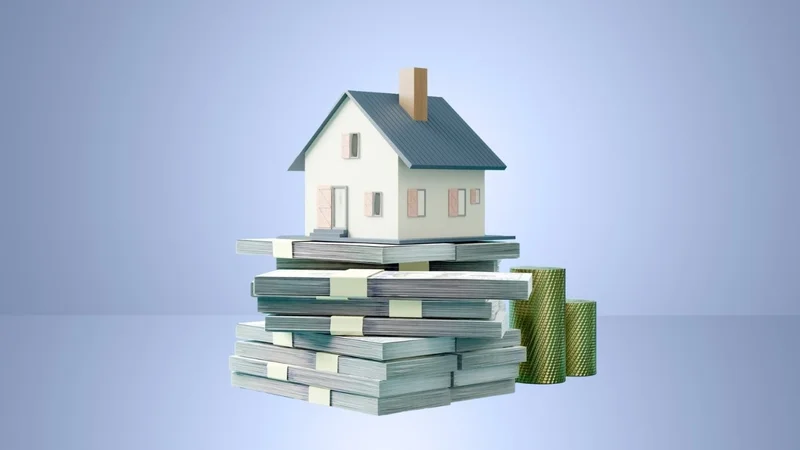Article Directory
So, everyone’s losing their minds because mortgage interest rates dipped below 6%. The headlines are practically screaming with joy. Freddie Mac, NerdWallet, Bankrate—they’re all throwing a party because the 30-year fixed is flirting with numbers we haven’t seen in a whole year, with reports celebrating that Mortgage Rates Drop To Lowest Level In A Year.
Give me a break.
This is like celebrating because the Category 5 hurricane barreling toward your house was just downgraded to a Category 4. You’re still screwed, just slightly less dramatically. The financial media is desperate for a good news story, and this is the best they could come up with? A minor dip in borrowing costs while the price of everything, especially the damn houses themselves, remains in the stratosphere.
Let's be real. The national median price for an existing home is over $420,000. At today's "low" rate of around 6.2%, that's still a monthly payment of over two grand, and that’s after you magically pull a 20% down payment—that's $84,000 in cash—out of thin air. Who is this helping, exactly? Is it the young family that’s been saving for a decade only to watch home prices launch into orbit? I don't think so.
The Illusion of a Helping Hand
The narrative they’re selling is that this is relief. A chance to breathe. But it’s an illusion. A funhouse mirror reflecting a distorted version of a healthy market. The only reason interest rates are dropping is because the economy is showing cracks. The Fed didn't just wake up one morning and decide to be nice. No, that's not right—they didn't cut rates out of generosity. They cut rates because the jobs report was tepid, the government is in a perpetual state of shutdown, and the whole system is showing "significant downside risks," to use Jerome Powell's sterile corporate-speak.
Let me translate that for you: "Things are starting to look ugly, and we're trying to keep the engine from stalling."

This whole situation is a perfect metaphor for the modern economy. We're not fixing the underlying disease; we're just managing the symptoms with cheaper debt. It's like giving a patient with a broken leg a lollipop. Sure, it’s a nice distraction, but it doesn't set the bone. The bone, in this case, is the grotesque unaffordability of housing itself. One economist, Lisa Sturtevant, said this cut won't be enough to "break up the housing market logjam." You think? We need a chainsaw for this logjam, not a pocket knife.
The real kicker is the "golden handcuffs" phenomenon. Millions of people are sitting on mortgages with rates under 3%. They can't move. They can't sell. They’re trapped. This little rate drop isn't for them. It’s bait for the desperate, the people who missed the boat and are now being told to jump into choppy waters because the tide is slightly less treacherous than it was last month. And honestly...
Don't Get Played by the Hype
So what are you supposed to do? The experts are all over the place, with headlines asking, Mortgage rates just dropped closer to 6%. Here's what buyers should consider now. Some say buy now before the spring season brings more competition. Others point to forecasts where rates might drop further in 2026. Fannie Mae and the MBA can’t even agree on what the hell is going to happen next year. It's a total crapshoot, and they're presenting it as sound financial advice.
Offcourse it is. It reminds me of the crypto bros from a few years back. "Get in now or stay poor forever!" It's all manufactured urgency, designed to create FOMO and push you into making one of the biggest financial decisions of your life based on the whims of the bond market.
The advice to "lock your rate" or "consider refinancing" is just noise. It's the financial industry's background hum, the constant, low-level pressure to do something. Transact. Move money. Take on debt. Don't just sit there, the market is moving! But what if sitting there is the smartest move? What if the game is rigged and the best way to win is not to play?
Nobody wants to say that out loud. It doesn't sell ads on financial news sites or generate commissions for lenders. But maybe, just maybe, celebrating a 6% mortgage rate in an economy this fragile is the definition of insanity.
Don't Drink the Kool-Aid
Let's cut the crap. This isn't a recovery. It's not a return to normalcy. It's a blip. A temporary reprieve in a system that remains fundamentally broken. The core problem isn't whether the 30 year mortgage rates today are 6.5% or 5.9%. The problem is that a basic human need—shelter—has been financialized to the point of absurdity, turned into a speculative asset for Wall Street and a debt trap for everyone else. These minor rate fluctuations are just the house adjusting the odds at the casino. Don't mistake it for generosity.
